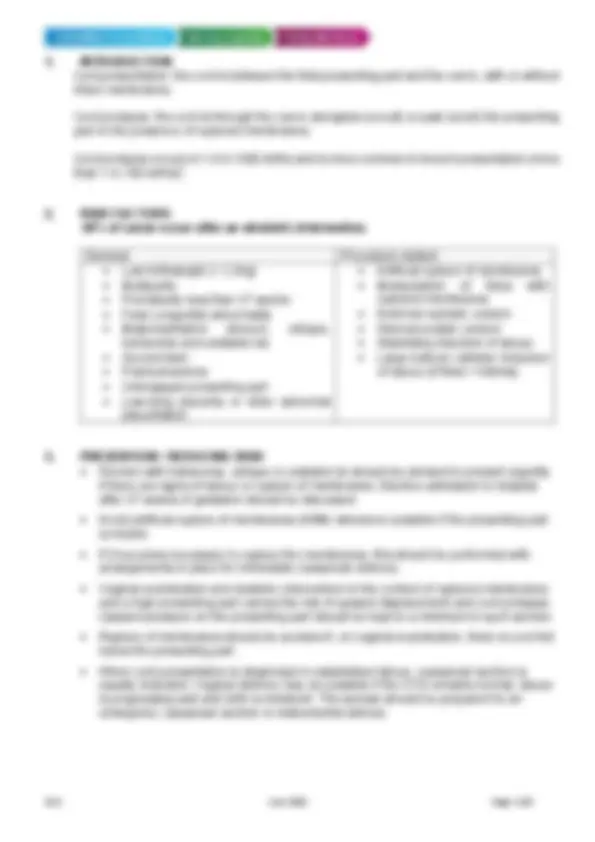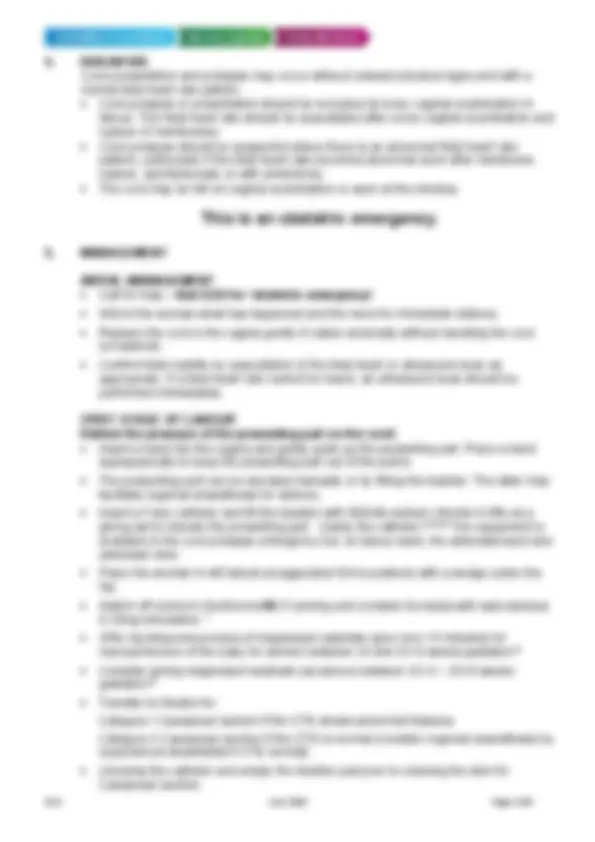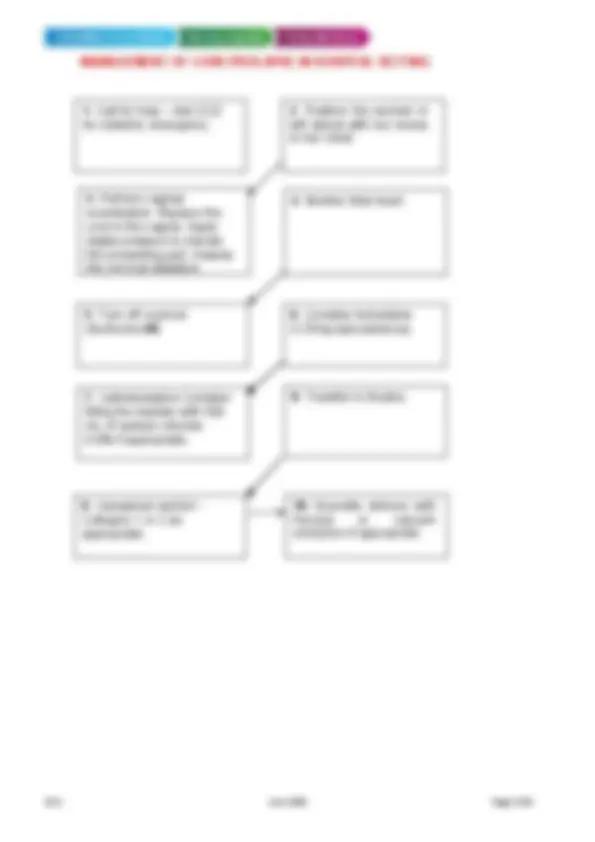






Study with the several resources on Docsity

Earn points by helping other students or get them with a premium plan


Prepare for your exams
Study with the several resources on Docsity

Earn points to download
Earn points by helping other students or get them with a premium plan
Community
Ask the community for help and clear up your study doubts
Discover the best universities in your country according to Docsity users
Free resources
Download our free guides on studying techniques, anxiety management strategies, and thesis advice from Docsity tutors
A clinical guideline on the management of cord prolapse, a potentially life-threatening condition for both the mother and the baby. It covers risk factors, diagnosis, initial and second stage management, and training for healthcare professionals. The guideline emphasizes the importance of recognizing the signs of cord prolapse, relieving pressure on the cord, and delivering the baby promptly.
What you will learn
Typology: Study Guides, Projects, Research
1 / 8

This page cannot be seen from the preview
Don't miss anything!





Key Points
Version: 2.
Guidelines Lead(s): A Kirkpatrick (Consultant Obstetrician FPH) & O Eniola (Consultant Obstetrician WPH)
Contributors: E Hutchinson (ST3 Doctor O&G)
Lead Director/ Chief of Service: Anne Deans
Ratified at: Obstetrics and Gynaecology Clinical Governance Committee, 22nd^ June 2020
Date Issued: July 2020
Review Date: June 2023
Pharmaceutical dosing advice and formulary compliance checked by:
Ruhena Ahmad and Ruth Botting 1st^ July 2020
Key words: Cord prolapse, artificial rupture of membranes, presenting part
This guideline has been registered with the trust. However, clinical guidelines are guidelines only. The interpretation and application of clinical guidelines will remain the responsibility of the individual clinician. If in doubt contact a senior colleague or expert. Caution is advised when using guidelines after the review date. This guideline is for use in Frimley Health Trust hospitals only. Any use outside this location will not be supported by the Trust and will be at the risk of the individual using it.
Version Control Sheet
Version Date Guideline Lead(s) Status Comment 1.0 September 2016
Alison Kirkpatrick O. Eniola
Final First cross site version
2.0 June 2020 Alison Kirkpatrick, O. Eniola, E. Hutchinson
Final Updated and approved at OGCG 22.06.
Related Documents
Document Type Document Name
Abbreviations
ARM Artificial rupture of membranes CTG Cardiotocography
Cord presentation: the cord is between the fetal presenting part and the cervix, with or without intact membranes.
Cord prolapse: the cord is through the cervix alongside (occult) or past (overt) the presenting part in the presence of ruptured membranes.
Cord prolapse occurs in 1-6 in 1000 births and is more common in breech presentation (more than 1 in 100 births) 1.
50% of cases occur after an obstetric intervention.
General Procedure related
Cord presentation and prolapse may occur without outward physical signs and with a normal fetal heart rate pattern.
FIRST STAGE OF LABOUR Relieve the pressure of the presenting part on the cord:
The patient safety / risk management midwives will identify cases via incident reporting or clinical triggers and will arrange a review of the notes by the appropriaye clinician (lead obstetrician, anaesthetist, paediatrician or senior midwife). Any relevant risk issues identified will be discussed and actioned in the maternity risk management group or obstetric clinical governance group.
1 – Royal College of Obstetricians and Gynaecologists (2014) Green-top Guideline No. 50 Umbilical Cord Prolapse. RCOG. London
2 – Katz Z. Management of labour with umbilical cord prolapse: a 5 year study. Obstetrics & Gynaecology. 1988;72 (2): 278-81.
3 – Vago T. Prolapse of the umbilical cord. A method of management. AJOG 1970;107:967-9.
4 – Chetty RM, Moodley J. Umbilical cord prolapse S Afr Med J 1980;57:128-9.
5 – Caspi E, Lotan Y, Schreyer P. Prolapse pf the cord: reduction of perinatal mortality by bladder instillation and caesarean section. Isr J Med Sci 1983;19:541-5.
6 – NICE guideline [NG25] Preterm labour and birth (August 2019)
7 – British Association of Perinatal Medicine (2019) Perinatal Management of Extreme Preterm Birth Before 27 Weeks Gestation – A Framework For Practice. BAPM
9. Caesarean section - Category 1 or 2 as appropriate.
2. Position the women in left lateral with her knees to her chest
1. Call for help – dial 2222 for obstetric emergency.
3. Perform vaginal 4. Monitor fetal heart. examination. Replace the cord in the vagina. Apply digital pressure to elevate the presenting part. Assess the cervical dilatation.
7. Catheterisation Consider^8. Transfer to theatre. filling the bladder with 500 mL of sodium chloride 0.9% if appropriate.
6. Consider terbutaline 0.25mg subcutaneous.
5. Turn off oxytocin (Syntocinon®)
10. Expedite delivery with forceps or vacuum extraction if appropriate.